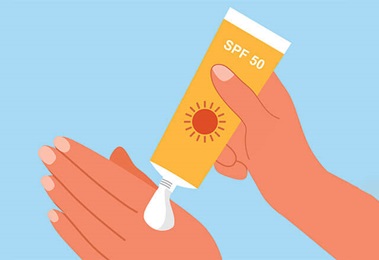Other Bacterial Skin Infections
What are common types of bacterial skin infections?
Below are common bacterial skin infections.
| Infection | Symptoms | Treatment |
|
Erysipelas |
A skin infection most often caused by beta-hemolytic streptococci. This condition often affects the face or legs. In rare cases, it affects an area that was injured or where the skin is cut. Many people have a fever or flu-like symptoms. Symptoms may include:
|
Treatment may include:
|
|
Erythrasma |
A bacterial skin infection of the top layers of skin, more common in the tropics. This is caused by Corynebacterium minutissimum bacteria. This condition mainly affects obese adults and people with diabetes. It's often seen on parts of the body where skin touches skin. This includes under the breast and in the groin area. Symptoms may include irregular pink patches that turn into brown scales. |
Treatment may include:
The infection may return, needing another treatment. |
|
Impetigo |
A skin infection caused by a streptococcal or staphylococcal infection. Symptoms include pus-filled blisters or pustules. Blisters can range in size from peas to large rings. There is often oozing honey-colored liquid and yellowish scabs. Impetigo tends to occur on the face, arms, or legs. It's most common in children. It's very contagious. But symptoms often don’t affect the whole body. |
In most cases, this is not serious. It responds well to treatment. Getting treatment right away may help prevent impetigo from infecting deeper layers of skin. Treatment often includes antibiotics put on the skin or taken by mouth. |
|
Paronychia |
A skin infection around a fingernail or toenail. This infection can be caused by a break in the skin from a hangnail, manicure, fingernail biting, or other long-term (chronic) irritation. Symptoms may include:
|
Treatment may include:
|
|
Cellulitis |
This is a deep infection of the skin caused by bacteria. It usually affects the arms and legs. Common symptoms include:
|
Treatment may include:
|
|
Folliculitis |
An infection or irritation of the hair follicles. It looks like little pimples on a base of red, inflamed hair follicles. These bumps may ooze pus. They may also be:
|
Treatment may include:
|
|
Staphylococcal scalded skin syndrome |
This is a serious skin infection. The infection causes peeling skin over large parts of the body. Symptoms can include:
|
Treatment may include:
|
The symptoms of bacterial skin infections may look like other skin conditions. Always see your healthcare provider for a diagnosis.






